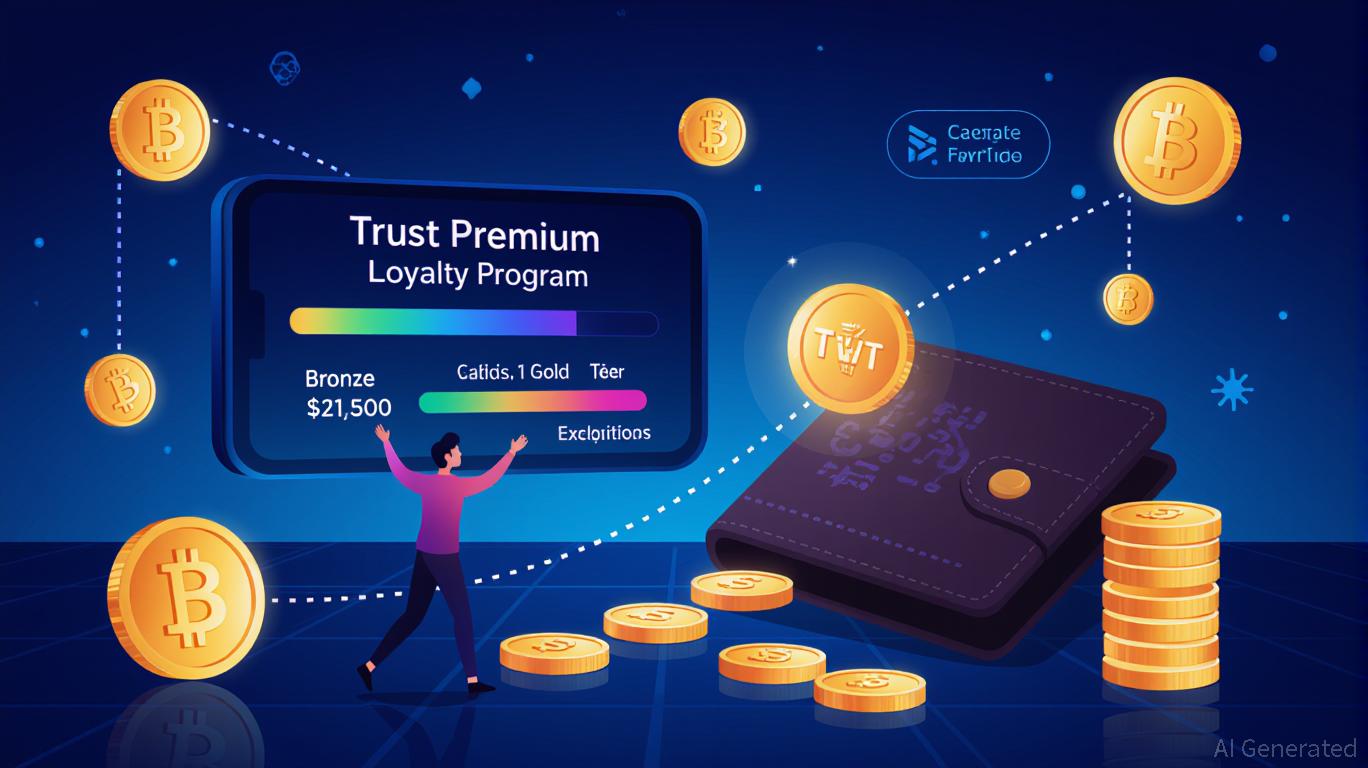TWT's Updated Tokenomics Structure and Its Impact on the Market
- TWT shifted to a gamified utility model in 2025 via Trust Premium, replacing governance-focused tokenomics. - Fixed supply and 2020 token burn (88.9B TWT) create scarcity but lack phased liquidity mechanisms seen in projects like Ontology. - Trust Premium tiers reward user activity with gas discounts and airdrops, linking TWT value to ecosystem engagement rather than speculation. - Over 40% supply already circulating since 2020 contrasts with aggressive liquidity incentives in competitors like Astar Netw
Fixed Supply and Burn Events: Building Scarcity
TWT’s total supply is strictly limited, with smart contract rules preventing any inflation, as highlighted in the
Trust Premium: Gamification Fuels Utility
Launched in the last quarter of 2025, the Trust Premium program brings a multi-level rewards system (Bronze → Silver → Gold) that rewards users for activities like swapping, staking, and holding TWT, as explained in the

Allocation Strategies and Market Motivation
TWT’s distribution plan focuses on long-term viability, with over 40% of the total supply already in circulation since 2020, as referenced in the
Investor Outlook and Volatility Concerns
The combination of TWT’s capped supply and gamified utility presents both opportunities and risks for investors. Scarcity and increased utility could help stabilize the token’s price over time. However, the absence of inflationary rewards and dependence on user participation could lead to price swings. For instance, if Trust Premium does not attract enough users, TWT’s value might stagnate or drop despite its limited supply. On the flip side, strong adoption could trigger sharp price increases, similar to what happened with Ontology’s ONG after its supply adjustment, as mentioned in the
Conclusion: Weighing Utility Against Liquidity
The 2025 tokenomics update for TWT marks a significant move toward prioritizing utility and user-driven value. While the fixed supply and Trust Premium initiative create a strong case for scarcity and engagement, the lack of liquidity incentives and gradual supply releases may present hurdles. Investors should consider the prospects for growth based on utility against the volatility risks tied to user participation. As the digital asset market continues to change, TWT’s future success will likely rely on its ability to maintain a careful balance between these factors, supported by a clear and sustainable allocation plan.
Disclaimer: The content of this article solely reflects the author's opinion and does not represent the platform in any capacity. This article is not intended to serve as a reference for making investment decisions.
You may also like
Grayscale's Public Listing: Advancing Crypto Adoption as Regulations Vary Worldwide
- Grayscale files U.S. IPO via S-1, joining crypto firms like Circle and Bullish in public markets. - IPO details remain undetermined, contingent on SEC review and market conditions. - Japan's TSE tightens crypto listing rules amid volatile "crypto hoarding" stock collapses. - U.S. regulators advance crypto rulemaking post-shutdown, potentially accelerating Grayscale's approval. - Grayscale's IPO highlights crypto's institutional push amid global regulatory divergence.

BNY's Stablecoin Fund Connects Conventional Finance with Around-the-Clock Digital Markets
- BNY Mellon launches BSRXX, a regulated fund enabling stablecoin issuers to hold GENIUS Act-compliant reserves without direct stablecoin investments. - The fund supports 24/7 digital markets by providing ultra-safe, short-term liquidity under federal requirements for stablecoin backing. - Anchorage Digital's participation highlights growing institutional adoption, with stablecoin reserves projected to reach $1.5 trillion by 2030. - BNY's $57.8T custody expertise positions it as a key infrastructure provid
Durov's Legal Victory Highlights the Ongoing Struggle Between Privacy and Government Oversight
- French authorities lifted a travel ban on Telegram CEO Pavel Durov after he complied with judicial supervision for a year. - Durov faces charges of complicity in alleged Telegram misuse for crimes, with potential 10-year prison and $550k fine if convicted. - He criticized French legal procedures and Macron's policies, highlighting tensions over digital privacy and blockchain integration. - The case underscores regulatory challenges for encrypted platforms, balancing user rights with accountability in a "

Avient's Improved EBITDA and Efficiency Boost Propel Shares Up by 8%
- Avient's stock rose 8% after Q3 results showed $0.70 adjusted EPS and 16.5% EBITDA margin, driven by productivity gains despite weaker sales. - Organic sales fell across key divisions (-4% in Color/Inks, -1% in SEM), with mixed regional performance and ongoing supply chain challenges. - 2026 guidance ($540M-$550M EBITDA) reflects cautious optimism, while analysts diverged on price targets amid macroeconomic risks and strategic shifts in packaging markets . - Management emphasized defense/healthcare growt
